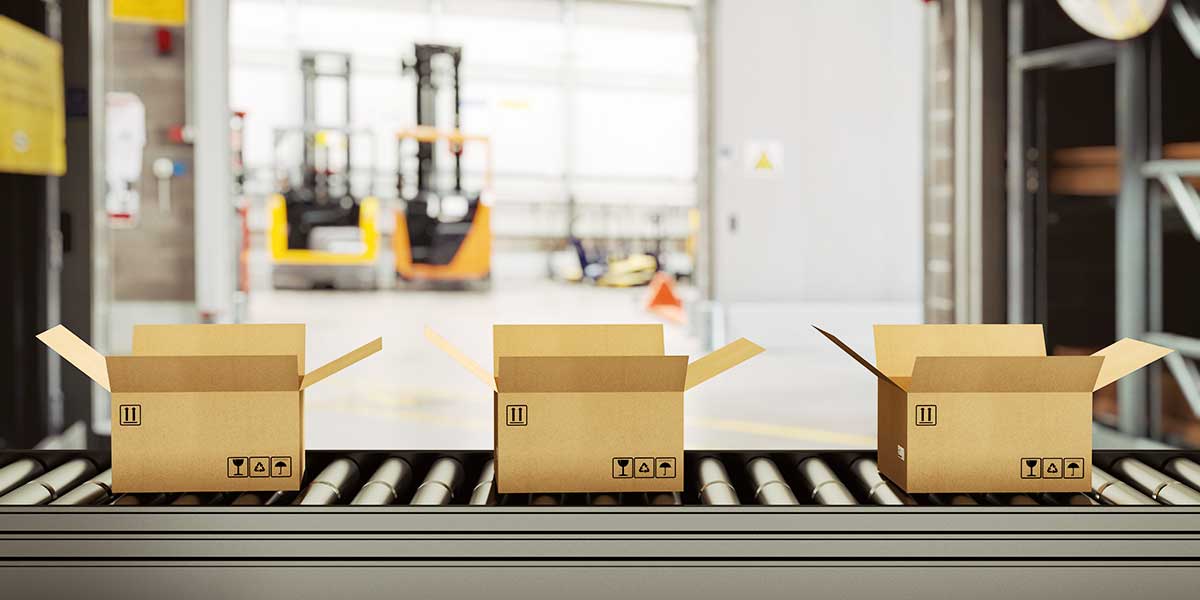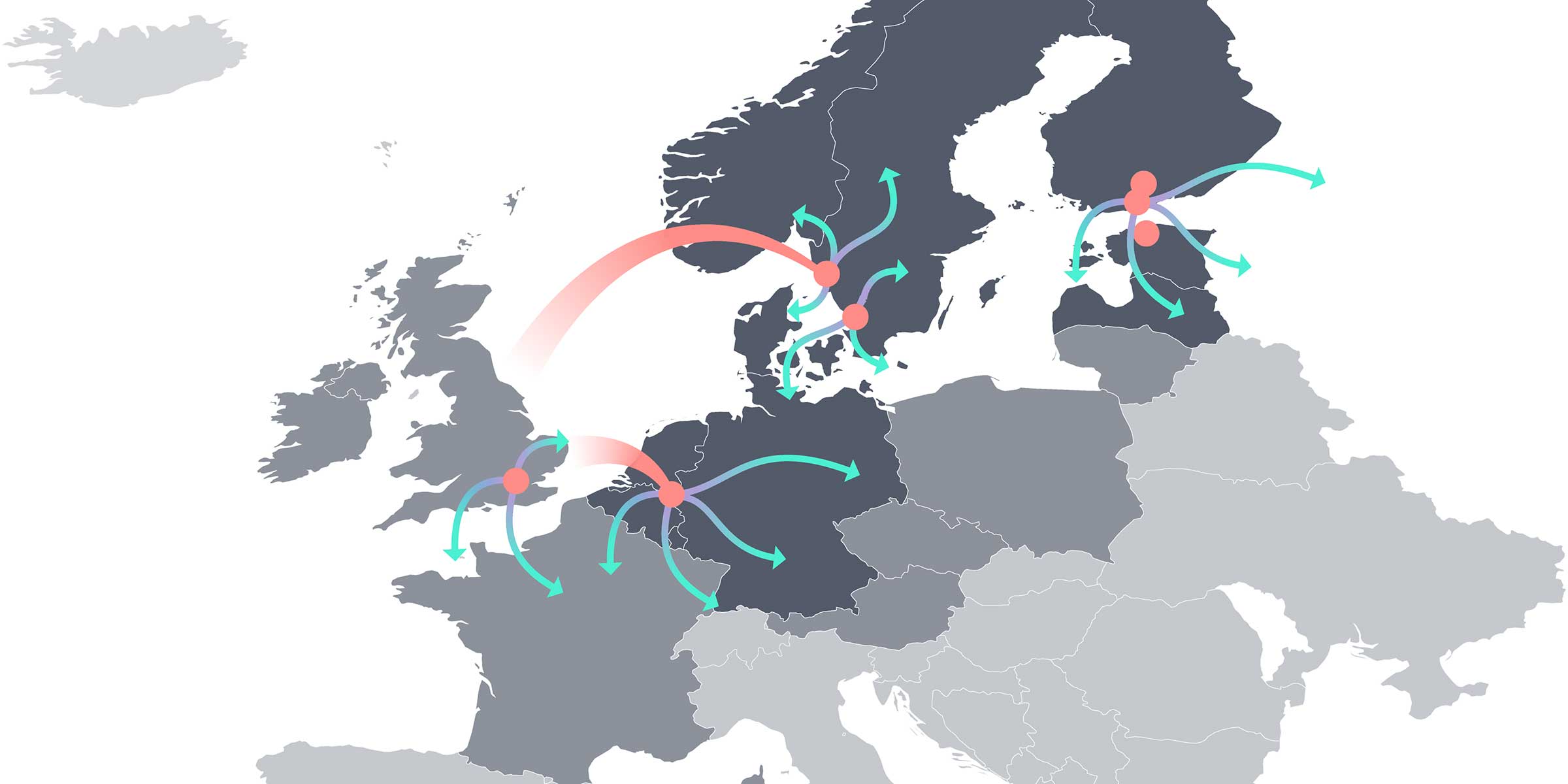Behind the Scenes: OGOship’s Sales Team Finland
Remember Tetris®, the highly addictive puzzle game, invented in 1984 by Alexey Pajitnov? For those of you folks who don’t know what the heck we’re talking about, here’s a brief explanation.
The idea behind Tetris® is to organize blocks in neat, full lines and fill the possible blanks by turning and organizing the blocks. “Embracing our universal desire to create order out of chaos” as tetris.com puts it.
Sorting out the “Warehouse Tetris” for e-commerce businesses is what Eija Heino, the Head of new Sales in Finland, calls her task. Eija and her colleague, Sales Manager Monika Suhonen, are in charge of “creating order out of e-commerce chaos” in Finland, where they lead the local OGOship sales team.
The Warehouse Tetris is a reality in the daily lives of both small and large e-commerce businesses. If a merchant has just started out the business, it may be that an order fulfillment hub equals a person’s living room. Chaos, for most.
On the other hand, for larger e-commerce businesses solving the Warehouse Tetris may be about finding the right 3PL partner with a simpler solution that suits the world of e-commerce businesses better. In some cases, the customers might only be looking for more competitive prices or a partner they feel would fit them better.
Whatever the case, it’s these two ladies’ job to sort it out and find a solution the e-commerce merchant can be happy with.

Accelerating growth
So, what kind of customers is OGOship helping in Finland? Eija and Monika say there are basically two kinds of customers that benefit from our services the most.
The first type is fast-growing online stores. They need a scalable and easy-to-manage way to handle their order fulfillment and logistics needs. For them, it makes sense to futureproof the setup, so that they can scale the business easily.
And if, for example, they decide to expand to international markets one day, they have the ability to do so without having to mess up their existing order fulfillment structure.
The second type is e-commerce businesses looking for easy ways to sell their products internationally, and that is what OGOship can offer them as well.
“Our competitive advantage definitely is that we enable online stores to stock products in multiple warehouses simultaneously”, Eija explains. One order fulfillment hub and warehouse could be in the main domestic market and another in mainland Europe or the United Kingdom – or all three.
Multi-warehouse and sell internationally
The benefit of multi-warehousing is that it allows online stores to offer fast and reasonably-priced shipments to their customers who might be geographically dispersed. When the shipping distance stays relatively short as the warehouse is closer to the end customer, it equals lower shipping costs.
“Multi-warehousing with OGOship is a really efficient way to sell internationally. You really get to enjoy the benefits of our local courier partners’ punctuality and efficiency”, Eija says.
Whether the customers are looking for ways to sell to international markets, or are just evaluating ways to streamline their order fulfillment process, a key component is that the order management system must be easy, simple, and straightforward. Otherwise, you’d risk creating “chaos out of order” instead of vice versa.
“When I show our e-commerce merchants in myOGO how simple it is to manage a seemingly complex setup like multi-warehousing, our customers are usually flabbergasted”, Monika laughs.
Although OGOship is not the party that takes up the role of giving legal counseling on tax issues or customs regulations or duties, our sales and customer service teams must be aware of all the practical things required for international sales.
This way, we can guide our customers further and lay out the practical things they must tick off their checklist before they can conduct cross-border sales.

Outsourcing order fulfillment is not the right solution for everyone
Eija explains that, even if OGOship would love to be able to serve each and every e-commerce business, it is fair to say that our services are not the best option for everyone.
The number one reason for a mismatch is that the e-commerce business sells only a few products with a really low profit margin. Even if the shipment volumes for individual SKU’s was high, it may still not be enough to cover the expenses of outsourced order fulfillment.
In fact, a situation like this makes it difficult to acquire any kind of professional service to support the growth of the business. Low profit margin product stores are kind of forced to do most of the things themselves, even if they wouldn’t like to.
Another possible mismatch can be if the e-commerce store is not really eager to put time and resources into managing and growing the business. It’s not any use to have a perfect, streamlined order fulfillment and logistics process if you just don’t sell.
If you are an e-commerce business, it hardly ever makes sense to pay for warehousing just for the sake of warehousing – products are meant to move.

Top 5 tips for Finnish e-commerce businesses
With their long experience working with e-commerce businesses, Eija and Monika could easily work out a 50 bullet point list with important tips for online stores, but when asked, they managed to narrow down their thoughts to the top five tips below.
1. A grand idea alone is not enough
Operating an e-commerce store requires more work than it might seem. Even if you have the best idea in the world, it might not be enough. The products seldom sell themselves.
Make sure you have the time and resources to invest in growing the business: create some buzz, do marketing, serve your customers well, constantly develop your product line, source new products, and make sure you always have enough items in stock.
2. Start smart with multi-warehousing
If you are looking to start selling to international markets, start smart. The best option is to start with your absolute key best-selling products.
Store a few SKUs in another warehouse abroad, gather sales data, and do your maths. After a while, you can make educated decisions on whether to expand the selection.
3. Multi-warehousing mitigates risks
In the past couple of years, supply chain and logistics were hit hard by the pandemic. This translated in delivery delays and product shortages – and customers noticed it.
Distributing inventory to multiple locations is one way to mitigate risks. If one order fulfillment hub is not operating at full speed, another one can pick up the slack.
4. Tallinn is just as close as Tampere
Even if your main market is in Finland and you only sell domestically, it oftentimes makes sense to store and ship your products from Tallinn. It is a very cost-effective solution for most e-commerce businesses.
Our Tallinn warehouse is a true crown jewel, and the way they have coped with the unprecedented global crisis is just amazing.
5. Select your partners wisely
There are so many different service providers out there that it might be difficult to know who is the right fit for you. The answer depends on your priorities.
What is the most important goal for your business? Are you looking for options to solve an issue that you have right now, or are you planning for the long term? Make your goals clear to yourself first, and communicate them to the potential partner you are evaluating.
If you want us to suggest ways we can help you to solve your “Warehouse Tetris”, don’t hesitate to drop us a line. We’d love to chat. {{cta(‘7dbedc37-bed3-4fc2-8bb4-686423f736ca’)}}